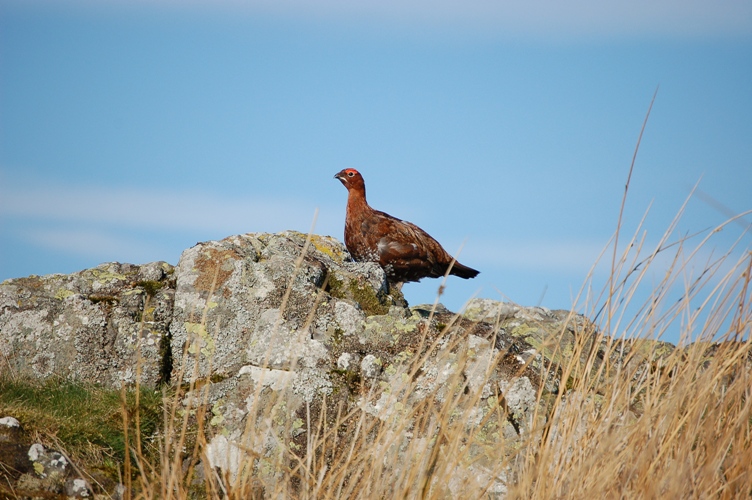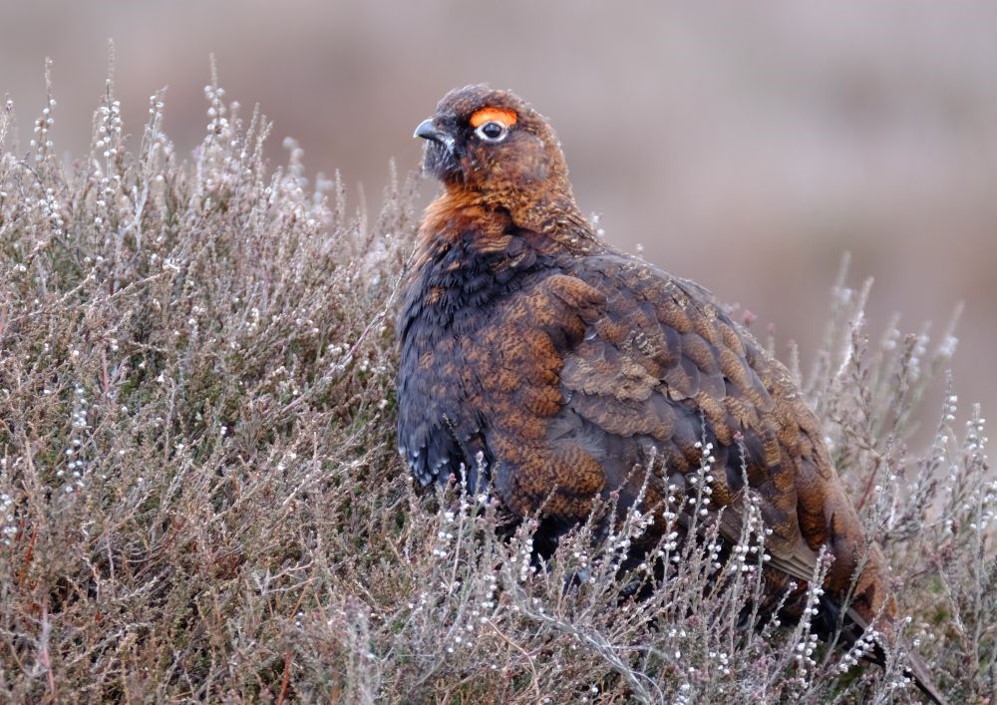Moor controversy
28 October 2019
Dr Pat Thompson, a senior policy officer for the RSPB tells us about the controversy surrounding grouse shooting.
Each year, an estimated 700,000 red grouse (a wild bird) are shot in the UK. Driven grouse shooting first became fashionable in the mid-1800s. Today, large areas of National Parks and Areas of Outstanding Natural Beauty (AONB) in England and Scotland are managed for the recreational shooting of red grouse. Vegetation is burned, tracks built, predators of grouse and carriers of grouse diseases trapped, shot and poisoned, and grouse medicated for disease – to ensure exceptionally high and increasing (150-500 birds per km2) post-breeding densities of grouse which are then ‘driven’ over lines of shooters.
And management practices have intensified. Just 30 years ago, grouse densities of 60 birds per km2 were considered acceptable. Today, grouse are more abundant (in places) than at any time since the 1930s.

Red Grouse in Northumberland National Park.
Burning is now more frequent and has moved uphill onto blanket bog and other vulnerable habitats. This is damaging internationally important peatlands, negatively impacting on water quality and flows, releasing carbon stored as peat over millennia and making Government ambitions to achieve net zero carbon emissions by 2050 ever more challenging. At the same time, the killing of birds of prey continues to stain the reputation of shooting with hen harriers and peregrines often missing from areas managed for grouse, including in National Parks and AONBs.
Grouse shooting interests continue to call for legal mechanisms to manage birds of prey. This intolerance of predation reveals a community still dominated by Victorian ‘big bag’ hunting values. Calls by the RSPB (and others) for environmental responsibility and self-regulation have largely failed. The RSPB has called for the introduction of a licensing system underpinned by rigorous monitoring and enforcement. This could, if implemented properly, end illegal and unsustainable practices and better support those who operate within the law.

Grouse in the North York Moors. Photo credit: Paul Ming
Grouse moor management could contribute to the conservation and environmentally sustainable management of our uplands, but not whilst it persists in combining a 19th century mindset with a 21st century arsenal of management tools to maximise red grouse production. Government must act now to end to the unsustainable management of land for grouse shooting.
Despite the conservation of wildlife being a key purpose of National Parks and AONBs, driven grouse shooting is prevalent across many of these protected landscapes and, along with intensive agriculture, is driving ongoing damage to upland habitats and wildlife. At this time of great change for the National Parks, we hope this issue is addressed head-on.
By Dr Pat Thompson, a senior policy officer for the RSPB
This article was originally featured in our Viewpoint magazine. Become a friend of Campaign for National Parks to receive your subscription!
